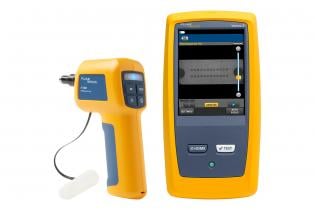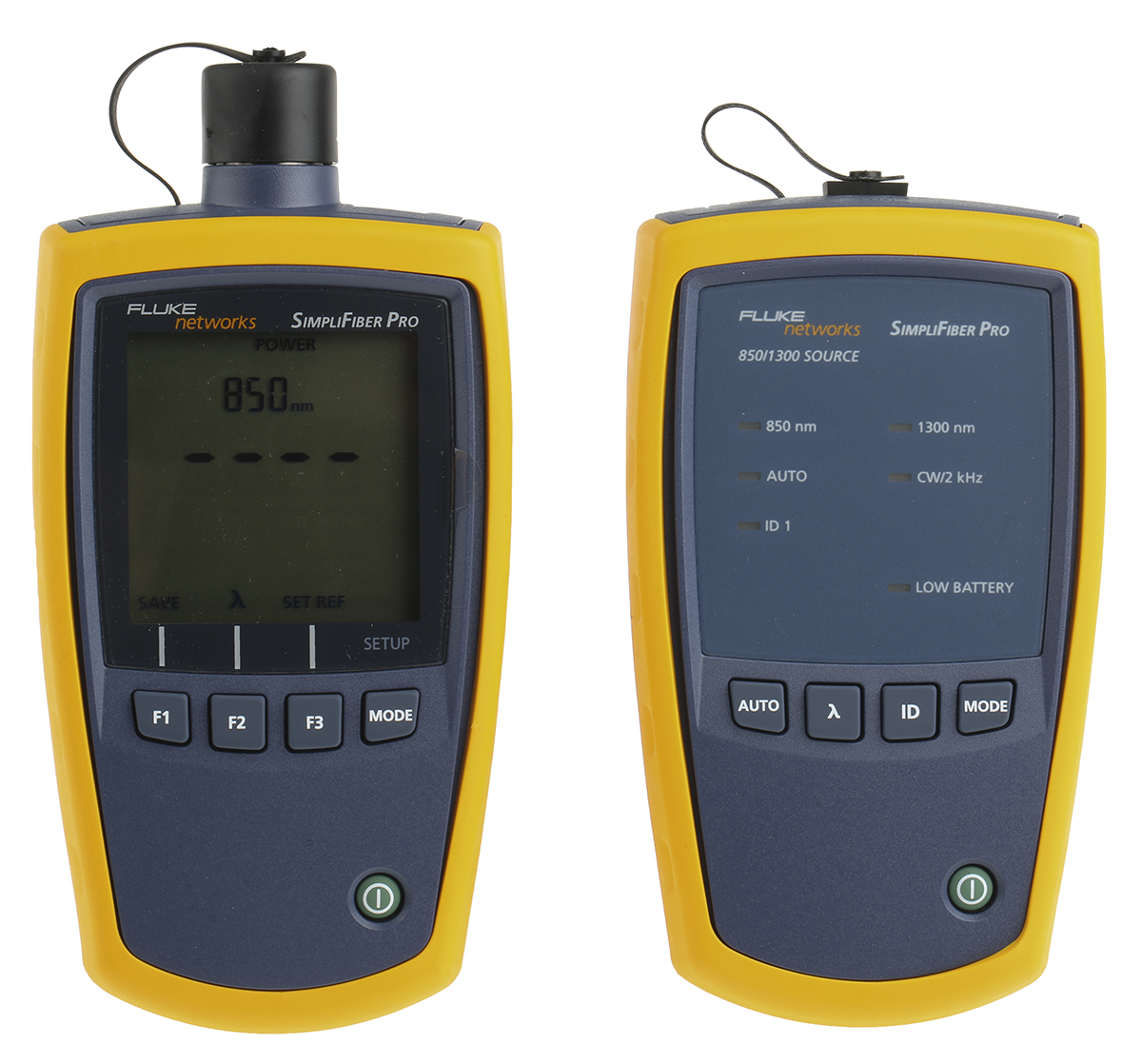Real-time monitoring of fiber quality using optical fibre diameter analyzer
Real-time monitoring of fiber quality using optical fibre diameter analyzer
Blog Article
A Comprehensive Guide to Optical Measurement System for Fiber Analysis
When it pertains to fiber analysis, understanding optical dimension systems is important for assessing performance and ensuring quality. You'll check out vital methods like interferometry and spectroscopy, which help you determine essential parameters. There's even more to it than just these techniques; mastering attenuation dimension strategies can substantially affect your network's effectiveness. As you navigate via this overview, you'll uncover insights that could change your technique to fiber optics.
Comprehending Optical Measurement Solutions
When you explore optical dimension systems, you'll find they're important for evaluating fibers with accuracy. These systems utilize light to assess different qualities of fibers, including size, refractive index, and uniformity. By using techniques like interferometry and spectroscopy, you can acquire valuable understandings into the fiber's properties.You'll find that these systems are created to reduce errors and enhance accuracy, ensuring dependable data for your analysis. Various configurations, such as single-mode and multi-mode systems, satisfy specific fiber types, allowing you to pick the best fit for your needs.Moreover, the integration of sophisticated software devices helps you analyze the data successfully, making it less complicated to identify any kind of variances or defects. As you explore deeper right into these dimension systems, you'll appreciate just how they streamline the logical procedure and improve the overall top quality of fiber manufacturing and screening.
Secret Specifications for Fiber Analysis
Key parameters for fiber analysis play an important duty in figuring out the high quality and efficiency of fiber optics. When you examine a fiber, you'll intend to focus on characteristics such as attenuation, bandwidth, and modal dispersion. Attenuation determines the loss of signal strength as light travels via the fiber. A lower depletion worth suggests better quality and longer transmission distances - fibre testing equipment.Bandwidth refers to the data-carrying capability of the fiber and is important for high-speed communication. You'll require to examine the bandwidth to assure it satisfies your application requirements. Modal dispersion, which occurs from the various rates at which light trips via different settings in multimode fibers, affects signal clearness
Techniques for Depletion Measurement

Transmission capacity and Its Effect on Efficiency
Recognizing transmission capacity is essential for optimizing fiber performance, as it directly influences the quantity of data that can be sent over a network. Higher data transfer indicates you can send even more details concurrently, allowing for faster communication and far better general efficiency. When you're functioning with fiber optics, it's crucial to consider just how bandwidth communicates with fiber features, such as core size and material properties.If the bandwidth is limited, you may experience information loss or slower rates, influencing your applications. Additionally, various kinds of fibers can support differing data transfer levels, so it is necessary to pick the right fiber for your certain needs.You must additionally maintain in mind that environmental elements, like temperature and external disturbance, can impact transmission capacity. By comprehending these facets, you can make enlightened decisions to boost your fiber optic systems, Your Domain Name ensuring reputable and efficient information transmission.
Refractive Index Measurement Approaches

Total Internal Reflection
Total inner reflection (TIR) offers as a basic concept for measuring the refractive index of fibers. When light trips from a denser tool to a much less thick one, it can just be totally shown if the angle of incidence goes beyond a details threshold, understood as the essential angle. This sensation permits you to determine the refractive index by examining the angles at which light mirrors or refracts. By making use of an arrangement that routes light into a fiber and determines the resulting angles, you can determine the refractive index accurately. Recognizing TIR not just improves your fiber evaluation yet also improves the layout and performance of optical systems. Leveraging TIR can lead to a lot more efficient fiber-based applications.
Interferometric Methods
Building on the concepts of total internal representation, interferometric techniques offer a powerful ways for measuring the refractive index of fibers with high accuracy. These approaches exploit the interference patterns developed when light beams split and recombine after traveling various paths. You can use configurations like the Michelson or Mach-Zehnder interferometer to examine phase shifts caused by adjustments in refractive index. By meticulously calibrating your system and assessing the resulting fringes, you can figure out the refractive index with amazing precision. It's essential to preserve stable ecological problems to decrease errors. With these strategies, you'll boost your understanding of fiber residential properties, leading to much better performance in various applications, from telecoms to sensing unit technology.
Modal Dispersion and Its Importance
Modal diffusion refers to the dispersing of light pulses as they take a trip through a fiber, which can impact the overall performance of the system. You'll see that this sensation can bring about signify distortion, impacting data transmission prices and top quality. Recognizing its importance is crucial for optimizing fiber optic styles.
Interpretation of Modal Dispersion
In fiber optics communications, modal dispersion plays a considerable role in identifying signal quality and transmission speed. It happens when different light settings travel at differing speeds via the fiber. Since each setting has distinctive courses and qualities, they can come to the obtaining end at different times. This time difference can lead to signify dispersing and distortion, which can break down the total efficiency of the communication system. You could experience modal dispersion primarily in multimode fibers, where the numerous paths of light worsen the concern. Understanding modal diffusion is important for enhancing fiber designs and ensuring that your interaction systems read this operate effectively, preserving the stability of the transmitted signals over longer distances.
Impacts on Fiber Performance
Comprehending modal dispersion aids highlight its impacts on fiber efficiency. This sensation occurs when different settings of light traveling at differing rates within the fiber, resulting in signify spreading with time. As you assess fiber optics, you'll discover that increased modal diffusion can substantially degrade signal quality, leading to minimized transmission capacity and longer transmission ranges. In practical terms, this means your data can show up distorted or postponed, affecting total communication effectiveness. To reduce these impacts, you could think about using single-mode fibers, which minimize modal dispersion. By choosing the best fiber type and recognizing exactly how modal dispersion influences performance, you can boost transmission high quality and warranty reliable information transfer in your optical dimension systems.
Devices and Technologies for Optical Measurements
When it comes to optical dimensions, numerous ingenious tools and modern technologies are at your disposal to boost fiber evaluation. You'll locate fiber optic testers, which evaluate signal top quality and performance, important for maintaining optimal network efficiency. Optical time-domain reflectometers (OTDRs) are crucial for situating mistakes and gauging loss over ranges, supplying in-depth insights into fiber honesty. Furthermore, spectrometers can analyze light ranges, helping you recognize product properties and composition.Don' t overlook the significance of imaging systems, like electronic microscopic lens, that allow you to aesthetically examine fiber surface areas for flaws. Consider using polarization analyzers to determine stress and anxiety and pressure in fibers, which is crucial for recognizing their behavior under various conditions. By leveraging these tools and innovations, you can significantly improve your fiber evaluation processes, making certain integrity and high performance in your optical networks.
Often Asked Concerns
What Are the Prices Connected With Optical Measurement Equipments?
The expenses related to optical dimension systems can differ substantially. You'll require to assess view publisher site equipment costs, upkeep charges, software licenses, and potential training costs. Budgeting meticulously will help you prevent unforeseen financial difficulties down the line.

Exactly How Often Should Fiber Evaluation Be Performed?
You ought to execute fiber analysis frequently, normally every six months or after significant modifications in the environment (optical fibre diameter analyzer). This assures excellent efficiency and aids recognize prospective problems prior to they affect your system's efficiency and dependability
Can Optical Measurement Solutions Be Calibrated in your home?
Yes, you can calibrate optical dimension systems in your home, but it requires accuracy. Make certain you follow the producer's guidelines, make use of suitable calibration criteria, and confirm your results to guarantee accuracy in your measurements.
What Industries Generally Use Optical Measurement Equipments?
You'll locate optical measurement systems commonly utilized in sectors such as telecoms, manufacturing, health care, and research study. They're important for top quality control, fiber analysis, and making certain specific dimensions in numerous applications, boosting efficiency and precision across markets.
Are There Any Kind Of Safety Interest In Optical Measurement Solutions?
Yes, there are security worry about optical measurement systems. You need to constantly use safety glasses to secure your eyes from intense light resources and warranty proper training to manage tools securely and stay clear of crashes.
Report this page